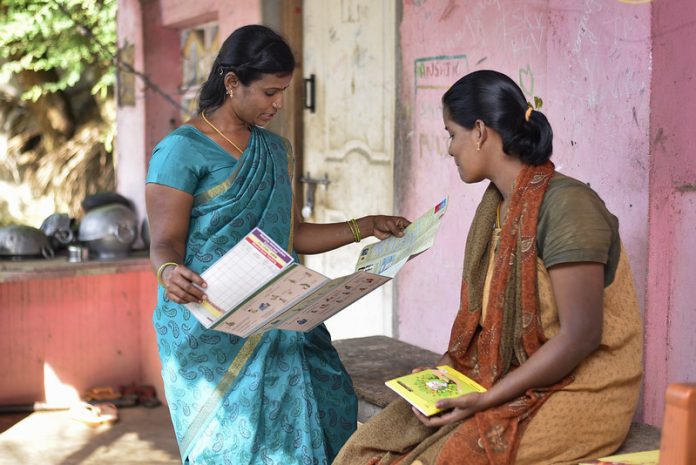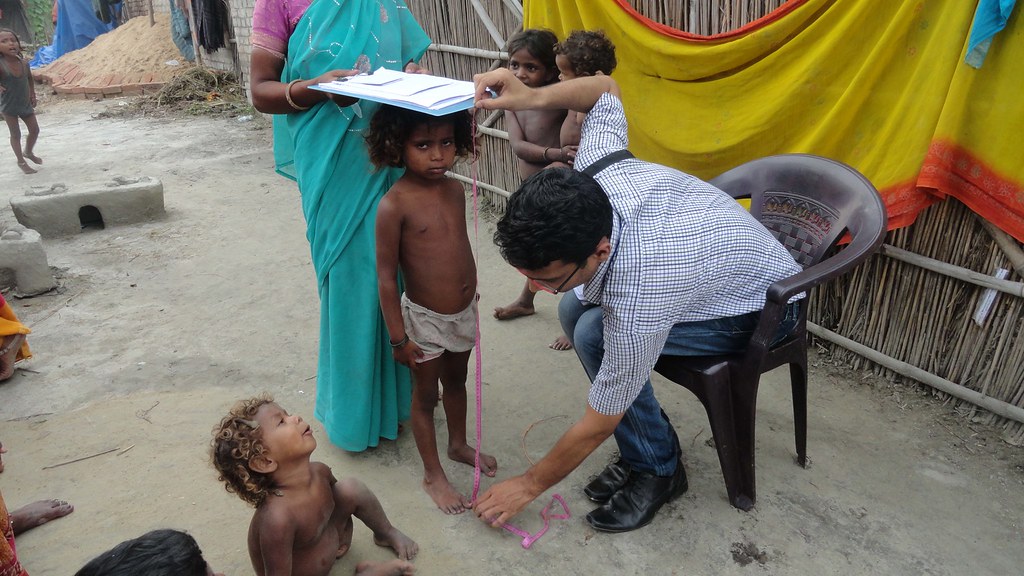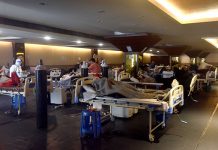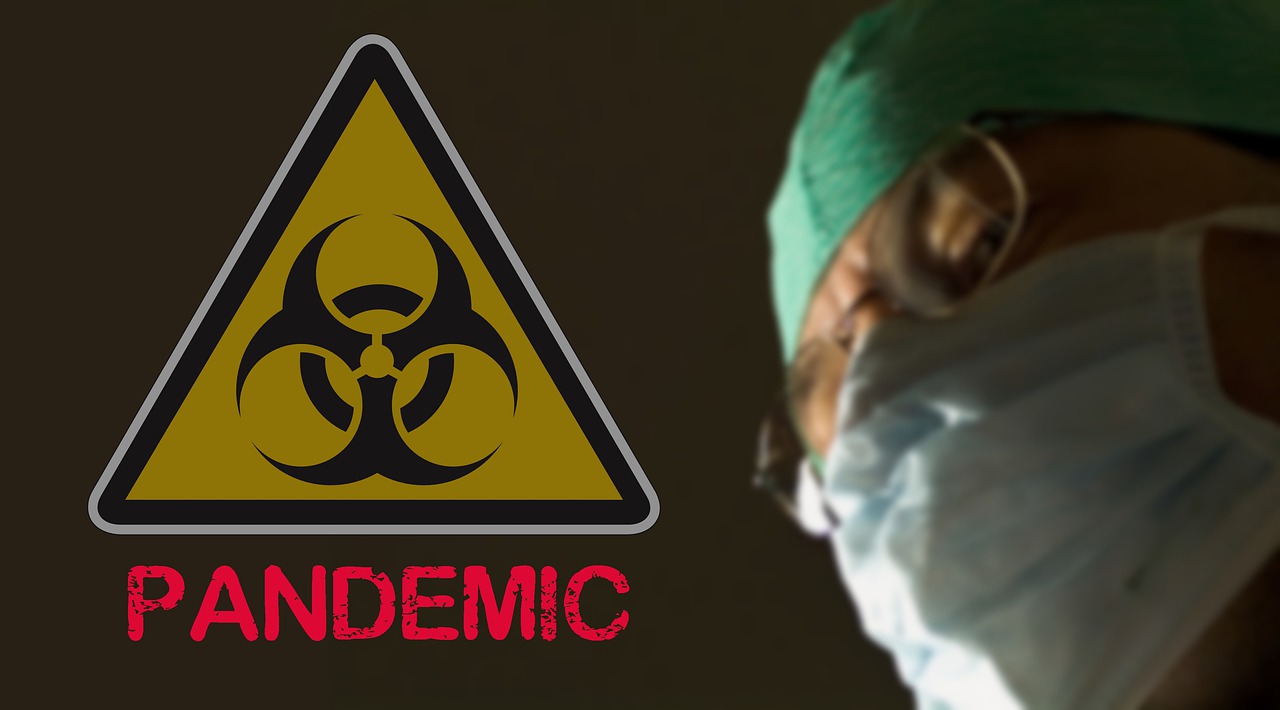Ujjwala Jagtap is scared of surveying her community. “We are risking our lives, and still, if we can’t save people, then what’s the point?” she asks.
A healthcare worker for the past 15 years, she was never this frustrated. Between 6 April and early May, her surveying area of 1 500 square metres in the Nigave Dumala village of Western India’s Maharashtra state reported 29 Covid-19 cases and eight deaths. During the same time, the village reported over 80 cases. “It’s nothing less than a disaster,” she says.
Ujjwala is among 970 000 Accredited Social Health Activists (ASHA) – the frontline women rural healthcare workers. Under India’s National Rural Health Mission, female health community activists (ASHA workers) are selected from the village itself. Of the 50-plus tasks they perform, some include universal immunisation, maintaining health records, creating community awareness, counselling on birth preparedness and contraception.
From March 2020, ASHA workers across 600 000 Indian villages were also tasked with containing the local transmission of the coronavirus. For this, they survey households, find the suspect cases through contact tracing, monitor SpO2 (oxygen saturation) levels and temperature and arrange medical facilities.
“Every lane has become a containment zone,” says Ujjwala. To get an RT-PCR (Reverse Transcription Polymerase Chain Reaction) test, people from her village travel 20km to Kolhapur city. With lockdown, people can’t use public transport. “They can’t afford private vehicles because almost everyone has lost their livelihood,” she explains.
This journey of 20km means facing stigmatisation for being suspected of having Covid-19, and it comes with a loss of income. Gayatri Khutale, a senior ASHA worker from the nearby Shiye village in Kolhapur district, explains: “Last year, corona patients were made an outcast in the village. The villagers didn’t allow them to step out of the house for weeks, despite the recovery.”
When Gayatri surveyed a house of 15 members which had reported two positive cases, she was verbally abused. “No matter what happens, we aren’t going to give our swab,” yelled a senior family member. People are scared of the ostracism that ensues after they test positive. Shripati Valke, a farmer who also runs a grocery shop in the Nigave Dumala village, says, “Last year, the villagers didn’t allow me to step out of my home even after recovering from Covid. It was a big loss.”
The patients, when detected, are referred to the nearest Covid-19 centre and, in serious cases, shifted to Kolhapur’s Chhatrapati Pramila Raje (CPR) public Hospital. “You mention the name of CPR hospital, and people start hiding symptoms,” says Ujjwala. This is because of several Covid-19 deaths reported there.
“This is delaying the early Covid diagnosis stage,” said Nilesh Thackeray, who is the only public doctor for 16 445 people at the sub-health centre in Kolhapur’s Tardal village. “The patients are detected only in the final stages when things get worse, and their oxygen saturation level drops,” explains Gayatri. “Comorbidities and past medical history make it difficult.”
Oxygen crisis
The second wave, which amplified the social trauma of the first wave, culminated in a fatality rate of over 3.4% at 12 May for the Kolhapur district – the highest in Maharashtra, which has reported more than 5.4 million cases. On 6 May, India reported 414 182 cases, the biggest spike in a single day. As of 13 May, the case count surpassed 25 million with over 283 000 dead.
Poor health infrastructure and a lack of access to medical facilities make it worse for the rural population of 833 million people. As per a 2019-2020 rural health statistics report, India has only 810 district hospitals, 24 918 public health centres, 5 183 community health centres and 155 404 sub-health centres for these people.
“People equate coronavirus with ventilator and oxygen. They think if tested positive, they will die,” says Gayatri. This fear stems from India’s oxygen crisis, where patients are dying as hospitals and states have run out of oxygen. This has now left hospitals petitioning the high courts.
The Delhi high court slammed Narendra Modi’s government over the inadequate oxygen supply to Delhi, saying: “You can put your head in sand like an ostrich, we will not.” The court went on to say: “There is [a] Supreme Court order, and now we are also saying that you will have to supply 700 MT oxygen daily to Delhi right away by whatever means. We would not hear anything except compliance.”

For a year now, Ujjwala and five other ASHA workers have been explaining to people that if detected early, patients can recover easily. It has come at the cost of facing verbal abuse and physical assault. Gayatri has been surveying her allocated area of 1 800 people for over 400 days now. One of the major challenges she faces is dealing with Covid-19 patients who violate the rules of self-isolation. “Now, I have started informing both the local and block-level civic body authorities about such cases,” she says.
When people refuse to get tested, she requests the local civic body to issue a letter to those suspected of having the virus. “In case they ignore this, they are warned of cutting the water supply,” she explains. Within a month of this strategy, her village reported 56 cases, with several others yet to be diagnosed.
Fake news
Another major challenge is countering misinformation. It has overburdened Rehana Mujawar, an ASHA worker in her early 30s from Tardal. “People have started thinking that only after vaccination did the cases increase so rapidly in the village.” This added more to the burden of ASHA workers who are now at the frontline of battling misinformation.
“There’s so much fake news circulation via WhatsApp, and people don’t even think twice before believing and circulating it,” she explains.
To explain the severity of the crisis, Rehana shows me her call history from 7am to 10am. “Hundreds and hundreds of calls,” she says. Some of the questions that Rehana has had to address for a month now include: “I have a heavy fever, cold, body ache. Can I still take the vaccine? When am I supposed to take the second dose? Is the vaccine safe? Can I inhale camphor to increase oxygen level?”
“There’s no moment of the day I am free,” she says.
In March 2021, when cases began rising again, “a few people started spreading the news that they tested positive only after taking the vaccine”. From here, it took several hours every day for Rehana and 13 other ASHA workers in Tardal to convince people to get vaccinated. “Now, when some of them are ready to take the jabs, it’s not available. I don’t know how long will I have to keep repeating the same,” she says.
Along with ASHA workers, the Anganwadi Sevika (public kindergarten teachers) are also surveying door to door. One among them is Asmita Kavathekar, in her early 40s, who surveys with Rehana. She narrates a recent incident: “From my survey, I found a person whose oxygen had gone below 90. Still, the person wasn’t willing to even get tested, let alone isolate.” She spent several hours convincing him. That didn’t yield any result.
“Finally, we had to call the elected representative and a local police officer.”
Only after that did the patient sign up for testing. His results came back three days later. He tested positive. “Finally, we got him admitted to the nearby Covid facility.”
Asmita then had to contact-trace everyone in the community. “When people don’t report their symptoms, they put an entire community at risk.” For the next seven days, Asmita and Rehana ramped up efforts to contain community transmission.
She has now lost count of how many potentially disastrous situations like this she has helped deter with this kind of work. “We are all overworked, and when people don’t even cooperate, it becomes more frustrating and difficult,” she said.
Impossible working conditions
Ujjwala, like other ASHA workers, who begin work at 8am said they feel under-appreciated by the people they serve and the organisations they work for.
“We are trying our best, but how are we to break the chain when there’s no support from the community and local civic bodies?” said Ujjwala.
Some of the first cases in the village were detected when people started moving back from the bigger towns and cities. ASHA workers say that last year they had a list of people who reverse-migrated.
“This year, people aren’t revealing who has come from outside. How will we contact trace if we don’t even know who’s in the village?” asks Rehana.

The second wave in India paints the picture of carelessness, mismanagement, prioritising election rallies and ill-informed decisions at every step. It’s the frontline healthcare workers who are now paying the price for this.
ASHA workers receive “performance-based incentives”. In the Kolhapur district, they average a monthly income of 3 000 Indian Rupees (R580). Mandakini Kodak, an ASHA worker and an activist from Kolhapur’s Pernoli village, says: “We haven’t been paid the stipend for the past three months. How are ASHA workers to survive?”
Last year, 600 000 ASHA workers went on a nationwide strike demanding better pay, adequate safety gear, and a legal status ensuring they receive the minimum wage.
In March 2020, India’s Prime Minister Narendra Modi declared a nationwide lockdown when India had 564 cases. This move devastated the economy – arresting half a year’s income for many. “With another state-level lockdown, people are overcrowding at the ration shops to get their free-allocated grains. Now, imagine Covid patients standing in this queue,” says Ujjwala.
With failures at the detection stage, the second wave has affected rural India – first devastating livelihoods and, now, the bare minimum healthcare infrastructure. Many health workers said that even today people don’t understand what Covid-19 is and how it affects everyone.
With India recording 300 000-plus infections daily for a week now, ASHA workers, whose work often remains ignored, are still surveying the community and the containment zones. Ujjwala, who comes in contact with Covid patients daily, asks: “How much will any ASHA worker try?”
This article was first published by New Frame.














